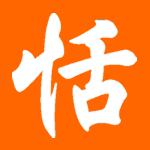http://goodcharacters.com/blog/blog.php?id=110
The application uses a set of random Chinese characters to correspond with 26 letters in English alphabet. The company claims this will "add mystery to your writing".
At least they are smart enough to put up this disclaimer at bottom of the page:
"The translation provided by Chinese Alphabet is intended for personal use and entertainment only. Not recommended for tattoo artists to use this to tattoo their clients, iPhone app developers to localize Chinese apps, CIA agents to communicate national secrets, or security professionals to encrypt passwords."


The characters aren't quite random. See how they chose characters that bear a resemblance to the letters in the alphabet?
ReplyDeleteWith this “alphabet” it’s clear they’re picking characters that look vaguely like the letters in question. Is that the case with the other fake alphabets people tattoo themselves with?
ReplyDeleteI think the other "fake alphabet" character sets are just random coding assignments, not any attempt to mimic English letters.
ReplyDeleteOh boy! This is just the set for Turkish teenagers whom use every character resembling a Roman letter in all kinds of script to write their MSN Messenger nicknames. I mean; ALL KINDS from Arabic to Thai.
ReplyDeleteMy prediction is that within a week, we will have at least one guy with nail-mouth-three tattooed on his arm thinking it reads Joe.
ReplyDeleteI'm not sure how you could say that it's not random. I read both languages and...
ReplyDelete...No, really, 人 is supposed to bear a resemblance to V? And that's really the best of the lot...
There's been much better efforts at this, and I certainly wouldn't pay money for this app.
If you follow the link to Good Characters, there's a link to "meaning of the alphabet characters." And some of them are wrong!
ReplyDeleteAnon @12:28 PM,
ReplyDeleteThe "meanings" are certainly quite mixed-up and confused, but I'm not sure any are completely "wrong." Some of the meanings are the Japanese ones and some the Chinese, and some are the meaning of a combination containing the character, but not the character itself. For example, 匹 is supposed to mean "equal to" but it only has this meaning in the Japanese word 匹敵 [hitteki] which does mean "equal to" or "a match for." In another example, 丁 has the meaning "man" only in Chinese and classical Japanese, but not modern Japanese.
So since both Japanese and Chinese meanings are included, some of them are bound to seem "wrong" to people familiar with only one of the two languages.
-Alan
Thanks for clearing that up, Alan. I only know the Japanese readings for these characters. Still, they are quite mixed up. In sum, this app seems not to be very good advertising for the quality of this company's product.
ReplyDeleteI'm fairly certain that this "alphabet" or something like it has been around for a while. I few years ago I was in a middle school where they had posters about China made by the sixth graders displayed in the hall, and the one about the "Chinese Alphabet" was something along these lines. Which is, I suppose, what happens when kids aren't able to distinguish between credible and non-credible websites...
ReplyDeleteIt appears to be the same alphabet that surfaced in this earlier post.
ReplyDeleteIn this post (http://goodcharacters.com/newsletters/chinese-alphabet.html) they clearly acknowledge that there is no "Chinese Alphabet" and that they just chose characters that had a superficial resemblance to the Roman characters. It's basically meant to be used like a code. What I don't get is why they go on to say their app is good for translating Chinese to English or vice-versa when it's clearly just cutting out the middleman and writing whatever you said in their "code".
ReplyDelete